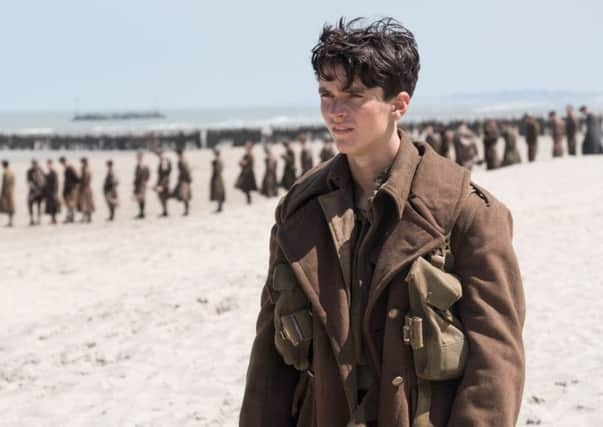Chris Bond: In memory of the war's forgotten heroes of Dunkirk


It had indeed been miraculous. The evacuation, codenamed Operation Dynamo, involved a hastily assembled flotilla of 900 naval and civilian craft that travelled back and forth across the Channel to rescue Allied soldiers, mostly British and French, who were stranded on the beaches outside the town on the northern French coast.
Many of these were privately owned boats, including tugs, pleasure cruisers and a 15-foot fishing dinghy – the smallest vessel in the flotilla.
Advertisement
Hide AdAdvertisement
Hide AdDespite the risk to themselves and coming under near constant attack by the Luftwaffe; they ploughed on and by the time the last man was pulled up from the surf some 338,226 troops had been saved to fight another day.
The rescue mission came at a high price with 5,000 soldiers killed and 235 vessels destroyed. Despite such heavy casualties it could have been far worse and the soldiers who made it back to England were treated like returning heroes. Their bravery and that of the redoubtable crews of the famous ‘little ships of Dunkirk’, as they became known, has since gone down in folklore in this country.
It is undeniably an epic tale and one that’s been turned into a new film, Dunkirk, which opened in cinemas yesterday. It’s written and directed by Christopher Nolan and features an impressive cast that includes Mark Rylance, Cillian Murphy and Sir Kenneth Branagh.
Critics have been falling over themselves to praise the movie which is already being tipped for success at next year’s Oscars and appears destined to join the pantheon of other great war films such as Saving Private Ryan and The Bridge on the River Kwai.
Advertisement
Hide AdAdvertisement
Hide AdThe triumphant rescue of the British Army from the beaches and jetty, known as the mole, at Dunkirk, has inspired numerous books, films and TV documentaries over the intervening decades.
The word ‘Dunkirk’ itself has become synonymous with stoicism and fortitude and evokes an enduring romantic myth: that the triumphant rescue of the British Army was solely down to the heroism of the Royal Navy and the plucky little ships that accompanied them.
It’s a persuasive story but it’s far from the full picture of what happened during those fateful days in 1940, when the future of Europe hung in the balance.
The British Expeditionary Force’s (BEF) French campaign was an almost unmitigated disaster. When Hitler’s army invaded Belgium and France on May 10, the German Panzer divisions out manoeuvred and then cut through the French defences leaving the British army exposed and forced into a desperate retreat to the coast.
Advertisement
Hide AdAdvertisement
Hide AdThey found themselves fighting a near constant rearguard action. Despite the bravery of its men the BEF was woefully ill-equipped and many troops were armed with rifles that dated back to the Great War, while some were left without any ammunition.
The BEF abandoned 2,472 guns, nearly 65,000 vehicles and more than 75,000 tons of much-needed ammunition. This is rarely mentioned in the retelling of what happened at Dunkirk. Neither is the fact that more than 40,000 British soldiers who didn’t escape were marched off into captivity.
To boost national morale, the British press wrote about the soldiers who escaped rather than those who were left behind, but the latter suffered a miserable fate.
In 2005, as part of The Yorkshire Post’s coverage commemorating the 60th anniversary of VE Day I interviewed one of those men captured during the retreat to Dunkirk. Harry Esders was a dispatch rider with the 1st East Riding Yeomanry and part of the defensive rearguard that slowed the German advance which allowed so many men to escape.
Advertisement
Hide AdAdvertisement
Hide AdAfter being injured during a Stuka attack he was captured and spent more than three years in a POW camp in Poland before managing to escape. He felt the British, and French, soldiers who held up the German advance around Dunkirk never received the recognition their sacrifice deserved.
The story of those left behind is brilliantly told in Sean Longden’s meticulously researched book, Dunkirk: The Men They Left Behind. In it he says that in the two weeks following the ‘miracle of Dunkirk’ the evacuation continued with 160,000 Allied soldiers – including British, French, Belgians, Czechs and Canadians – escaping via ports stretching from Normandy all the way down to the Bay of Biscay.
It was during these desperate days with France teetering on the verge of collapse that Britain experienced one of its worst wartime disasters.
On June 17, HMT Lancastria, a converted troop ship sent to evacuate those still stranded, sank near the French port of Saint-Nazaire after being bombed by the Germans.
Advertisement
Hide AdAdvertisement
Hide AdAt least 4,000 men, women and children lost their lives and there are agonising accounts of survivors standing on the upturned hull singing, ‘There’ll always be an England’ as enemy planes strafed the stricken boat before it slipped beneath the waves.
It was not only the largest loss of life from a single engagement for British forces during the Second World War, it was also the nation’s worst ever maritime disaster. However, the tragedy didn’t fit in with the narrative of the ‘miracle of Dunkirk’ and it was many years before the full story came out.
It’s quite right that today we should remember the heroics of Dunkirk, but equally we should take a moment to remember those who made sacrifices and shared in the horrors of war but received little or none of the recognition.